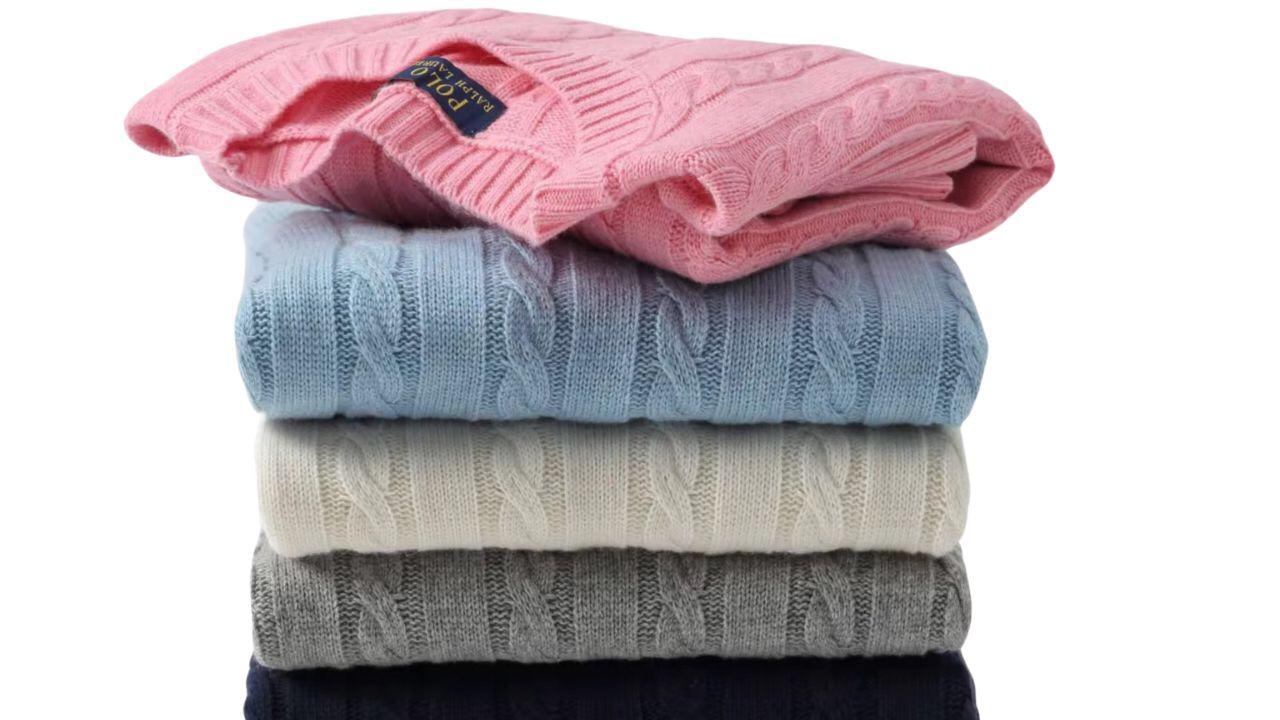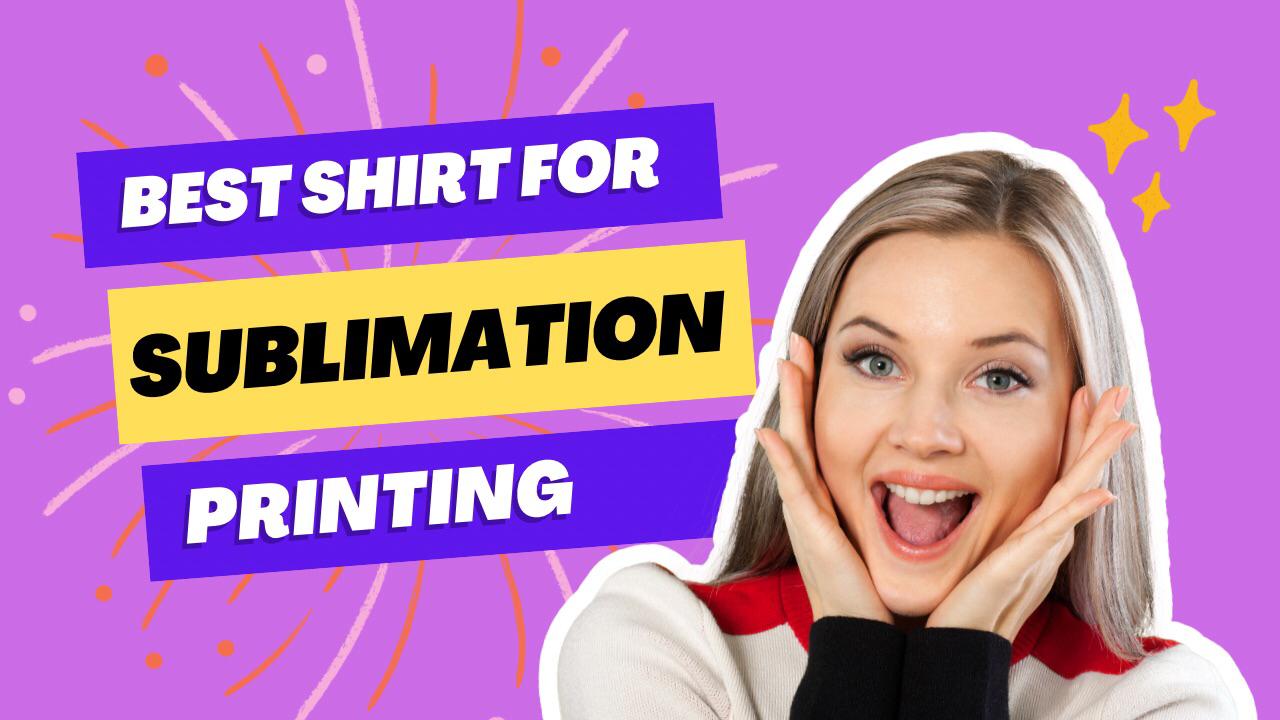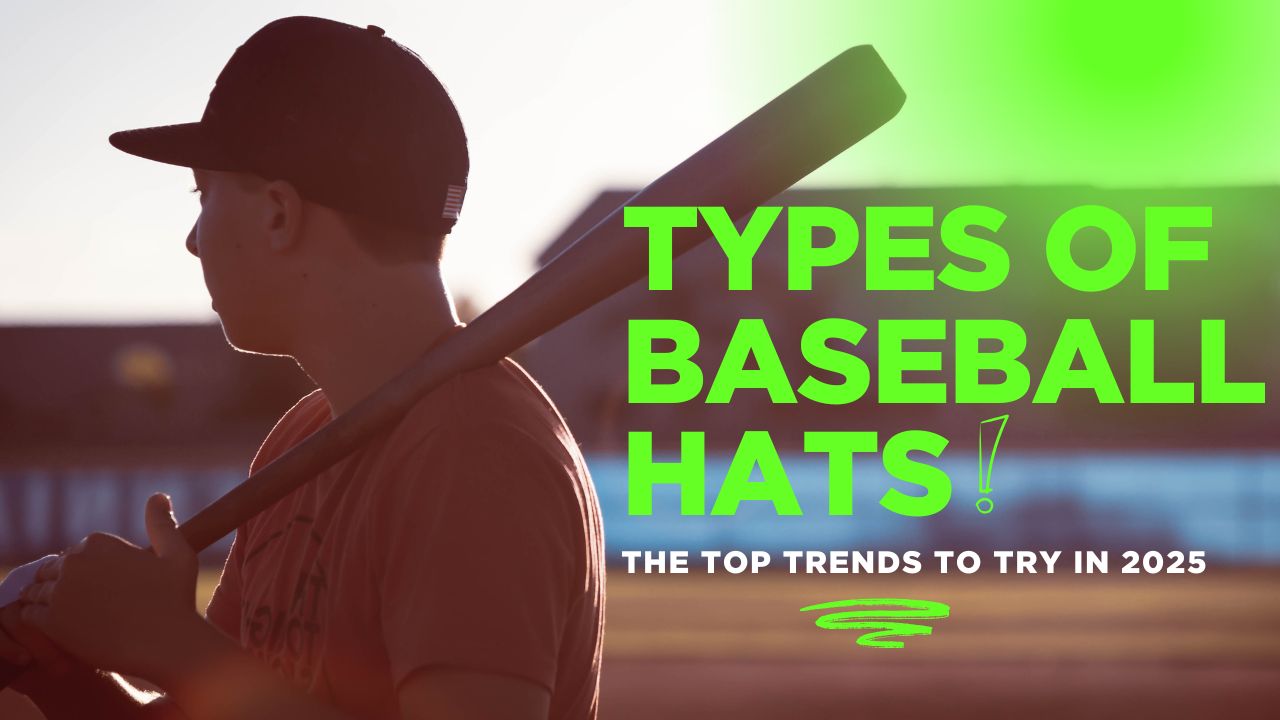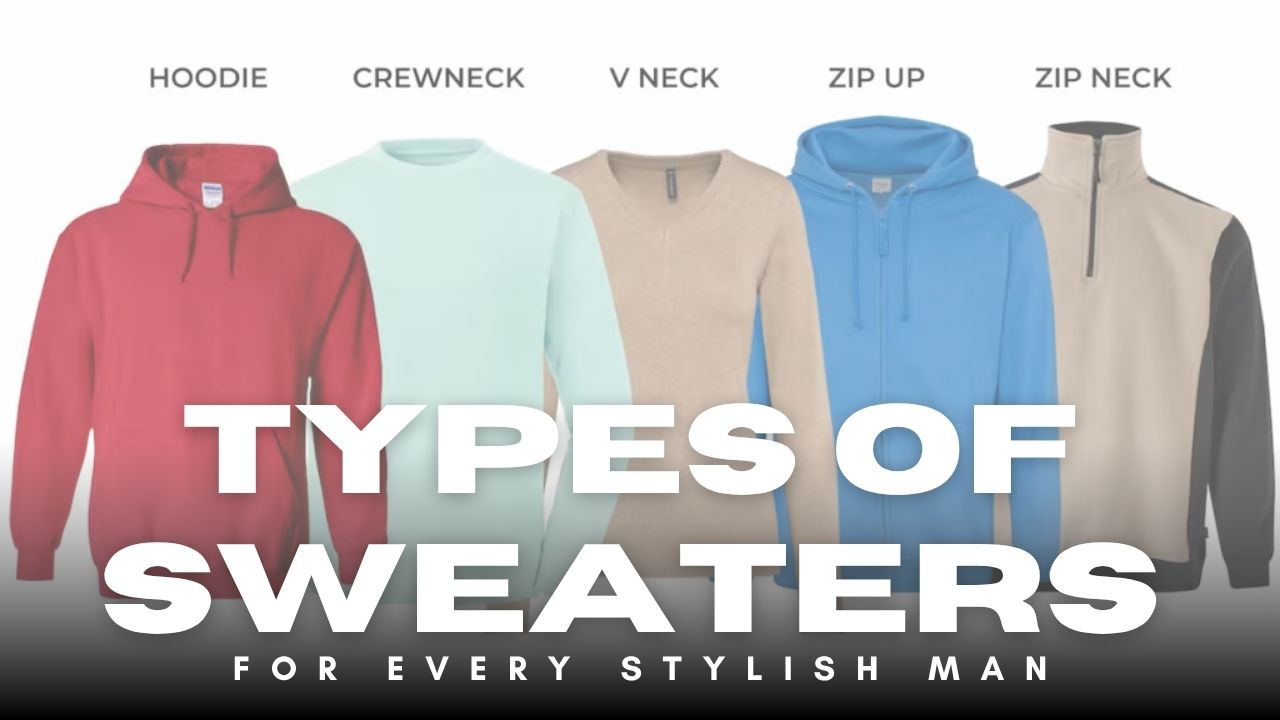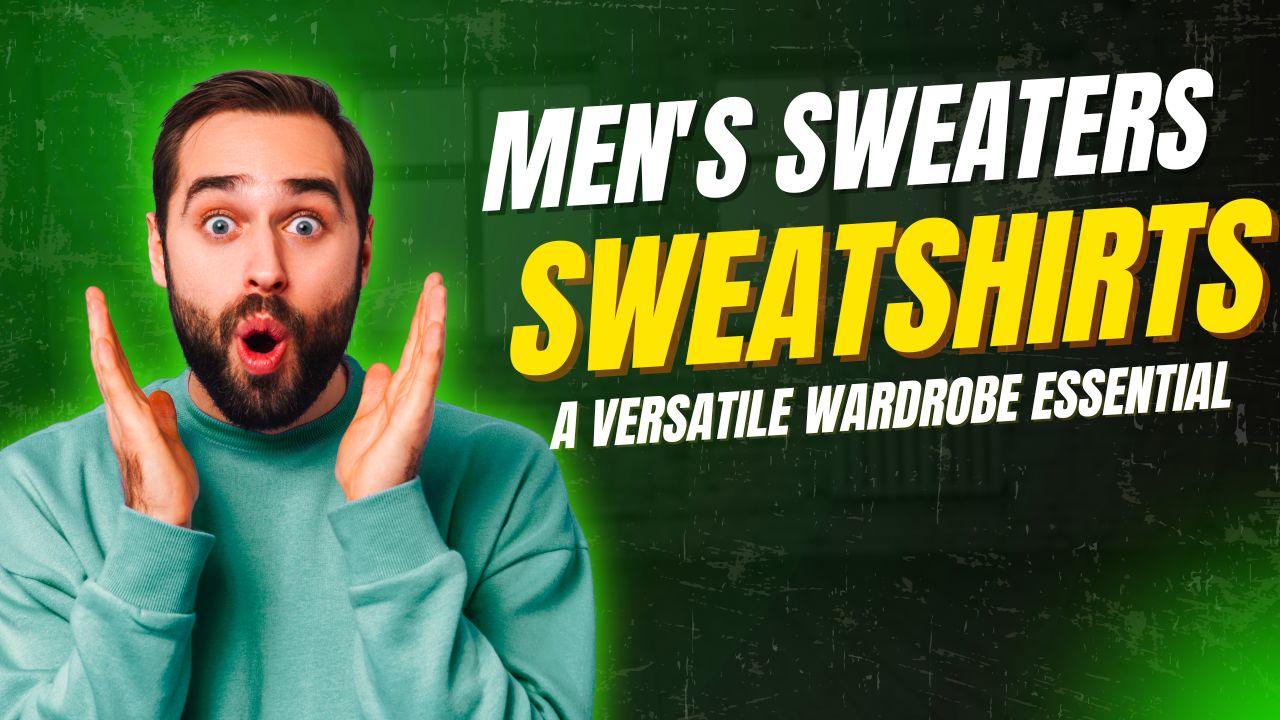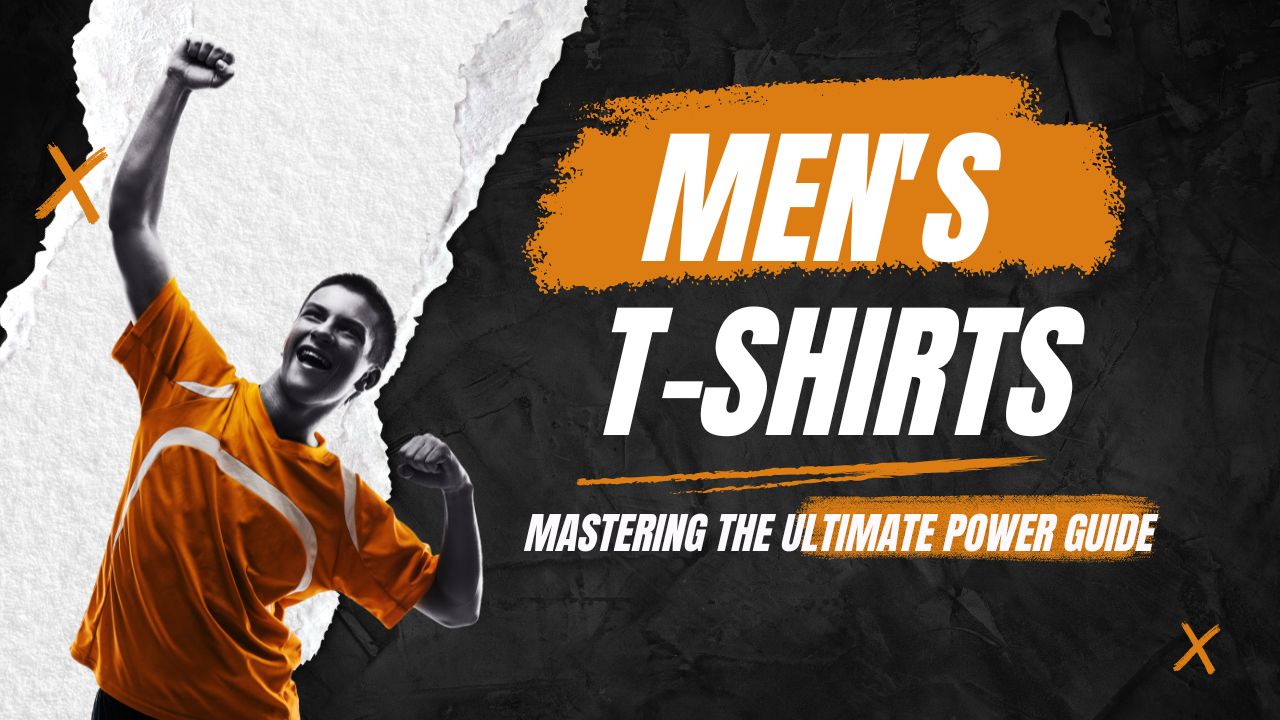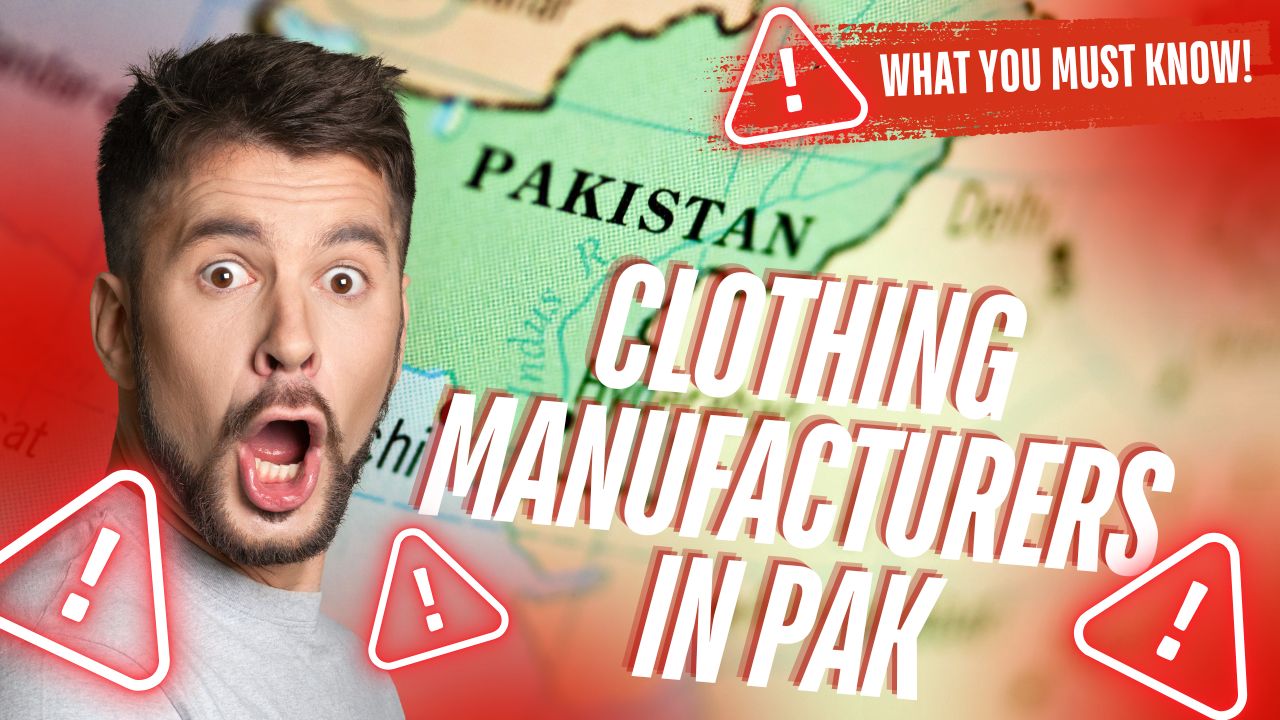When exploring the world of Men’s Sweaters & Sweatshirts – The Ultimate Guide, it’s clear that understanding the wide variety of Types of Cardigans is essential, especially when you want to Choose Right Clothing Vendor for quality knitwear. Sweaters come in many shapes and styles—from cozy cardigans perfect for layering to stylish knit designs that rival some Types of Jackets in versatility. Whether you’re looking for something lightweight in cotton blends or a warm wool pullover, knowing these differences helps you pick the perfect piece for your wardrobe. In my experience, blending classic and modern sweater styles not only adds warmth but also sharpens your overall look, making sweaters a key clothing item no matter the season or occasion.
Types of Sweaters for Every Stylish Man
What Is A Sweater?
A sweater is a versatile piece of clothing designed to protect the upper body from cold weather, crafted from a range of textiles including wool, cotton, silk, and blends. Sweaters come in various knit styles, shapes, patterns, and colours, offering warmth and comfort to the wearer. Whether thick or lightweight, sweaters are essential garments that combine practical insulation with fashionable designs to suit different occasions and personal tastes.
Different Types of Sweaters For Men and Women
Sweaters are an ideal go-to choice for both men and women looking to blend fashion with function. This guide explores a diverse range of sweater types — from casual knits to formal classics — that cater to varying styles and ensembles. Whether you seek cutting-edge designs or timeless favourites, sweaters offer a perfect balance of comfort and style, adding interest and warmth to your wardrobe throughout the seasons.
Aran/Fisherman Sweater
Originating from the rugged coasts of Ireland, the Aran or Fisherman sweater is known for its thick, textured knit patterns that reflect the natural surroundings and maritime heritage. Traditionally hand-knitted from wool, these resilient sweaters were crafted to offer warmth and protection for laborers working outdoors in harsh weather. Their distinctive earth-tone colours and durable yarn make them a rugged yet stylish choice, perfect for those who appreciate heritage craftsmanship and outdoor functionality.
Acrylic Sweater
Acrylic sweaters offer an affordable alternative to traditional wool garments, prized for being lightweight, colorfast, and easy to clean. However, acrylic fibers can sometimes feel inferior to natural wool, tending to pill and stretch over time. Despite these drawbacks, acrylic sweaters remain popular for their excellent durability and anti-pilling qualities, making them a practical option when carefully chosen for their blend and quality.
Argyle Sweater
Famous for its distinctive diamond pattern, the argyle sweater is a classic piece closely associated with golf and other outdoor activities. Characterized by interlocking shapes and vibrant yarn blends, argyle sweaters combine comfort and durability with a timeless appeal. Their intriguing design and cozy knit make them a stylish choice for both casual and semi-formal occasions.
Boyfriend Sweaters
Boyfriend sweaters have become a fashionable staple, prized for their laid-back, oversized silhouette that perfectly balances comfort and style. Typically made from soft cotton or wool blends, these sweaters offer warmth and plush coziness, making them ideal for casual social gatherings or relaxed weekends. Their loose fit pairs effortlessly with leggings or jeans, creating a trendy yet comfortable vibe popularized through social media and street style.
Bell Sleeve Sweater
Bell sleeve sweaters bring a vintage-inspired flair to modern fashion, characterized by sleeves that flare out elegantly from the elbow or wrist. This style, with roots tracing back to the Middle Ages and gaining prominence again in the late 20th century, adds a whimsical and feminine touch to any outfit. Bell sleeves provide volume and movement, enhancing the overall silhouette. These sweaters are often crafted from soft, flowing fabrics that emphasize the sleeve’s dramatic shape, making them perfect for fashion-forward individuals who enjoy blending history with contemporary trends.
Button-front Cardigan
Button-front cardigans are classic wardrobe essentials that combine elegance and adaptability. Featuring ribbed cuffs, hems, and often made from cotton, wool, or blends, these cardigans can be dressed up or down. Whether worn over dresses, paired with slacks, or layered with a blazer, their button closure allows for versatile styling. They come in an array of colors and materials, suitable for different occasions—from casual office looks to more formal settings. Their eye-catching yet understated charm makes button-front cardigans a beloved staple in both men’s and women’s closets.
Boat Neck Sweater
Inspired by the broad neckline of leotards and dancewear, the boat neck sweater features a wide neckline that elegantly frames the collarbone and shoulders. This style is popular among women for its graceful, flattering silhouette. The neckline adds a subtle hint of sophistication and is especially well-suited for layering with necklaces or scarves. Boat neck sweaters come in various materials and colors, making them a versatile option for both casual and dressier outfits.
Cape Sweater
Cape sweaters are a stylish type of outerwear designed to provide warmth and comfort while offering a unique layering option. Made from popular fabrics such as wool and various knit materials, cape sweaters are often worn both indoors and outdoors, making them versatile for different activities and seasons. Unlike traditional sweaters, cape sweaters are designed to drape over the shoulders and arms without sleeves, creating a classic and elegant silhouette. They are utilised as an additional layer over clothing or can be worn alone, depending on the amount of warmth needed. With numerous styles and materials available, choosing the right cape sweater depends on your preference for fabric, warmth, and the specific outdoor or indoor activities you plan to engage in. These sweaters combine the practicality of traditional knitwear with the sophistication of outerwear, making cape sweaters a popular and timeless addition to many wardrobes.
Cardigan
Cardigans are a versatile piece of knitwear designed to be layered comfortably over various outfits, making them ideal for chilly weather. There are many types of cardigans available, ranging from cropped styles that sit at the waist to longline designs that can reach the knees or thighs, offering something for everyone’s style preferences. Classic colors like charcoal, navy, beige, natural white, and other dark or light tones make cardigans beautiful staples in both men’s and women’s wardrobes. Their open-front style allows for easy layering over tops, blouses, or dresses, combining traditional patterns and distinctive stitch work to add special texture and interest to your ensemble. Whether you choose a lightweight cardigan for mild days or a thick, cozy one for winter, these sweaters provide both comfort and style, effortlessly elevating casual and formal outfits alike.
Cable Sweater
Cable sweaters are known for their intricate knit patterns that mimic twisted ropes, braids, knots, and lattices, creating a rich, textured look. Commonly designed as a pullover with a crewneck, these sweaters feature complex cable designs on the front and throughout the fabric. The detailed patterns, often inspired by traditional Saxon styles, add depth and dimension to the knitwear, making cable sweaters a timeless and stylish choice for cooler weather. Their unique craftsmanship sets them apart from simpler sweater styles, offering both warmth and visual interest in one classic garment.
Cashmere Sweater
Cashmere sweaters are renowned for their luxurious softness and exceptional comfort. Made from fine cashmere wool, these sweaters are often hand-knitted to ensure quality and a delicate feel. Compared to regular wool sweaters, cashmere is naturally softer and much less itchy, making it ideal for sensitive skin. Many cashmere sweaters undergo a special brushing process to enhance their softness even further. Available in various styles and varieties, cashmere sweaters provide both warmth and elegance, making them a particularly prized choice for those seeking comfort without compromising on style.
Cut-out Sweater
Cut-out sweaters bring a modern and stylish vibe to your wardrobe with their carefully carved openings, often on the chest, back, or sleeves. These sweaters create a seductive yet gentle look by revealing just the right amount of skin, adding a touch of sensuality to your outfit. Made from breathable materials like 100% cotton, cut-out sweaters are comfortable substitutes for heavier knits while maintaining their unique appeal. Worn consciously for their eye-catching design, they are perfect for those aware of fashion and looking to make a bold statement in different places and occasions.
Chunky Sweater
Chunky sweaters are thick, heavy knits perfect for wintertime, offering a cozy and textured look that’s both practical and fashionable. Often made with garter stitch patterns and bulky yarns, these pullovers provide extra warmth and comfort. Chunky sweaters are a great choice for colder climates and casual layering, making them popular among ladies who want a cozy yet attractive style. Their substantial stitch and weight give them a basic but eye-catching appeal that pairs well with everything from jeans to cardigans.
Crew Neck Sweater
The crew neck sweater is an easy, adaptable classic that works well with both casual and refined outfits. Featuring a rounded neckline, this sweater style complements dresses, slacks, and even jeans, making it a versatile wardrobe staple. Made from comfortable cotton or wool, crew necks can be layered with scarves or worn alone as an elegant accessory. Their fitted yet comfy design suits all necklines and is perfect for lazy days or when you want a no-fuss, stylish look.
Cowl Neck Sweater
Cowl neck sweaters feature a luxurious, draped neckline that adds both warmth and style to your outfit. Made from cozy materials like wool or cashmere, they offer a comfortable, carefree look perfect for chilly winter months. Whether paired with jeans or leggings, cowl neck sweaters bring a fashionable touch to any ensemble. Their modern style and cozy feel make them a go-to choice when you want to stay warm without sacrificing elegance or comfort.
Distressed Sweater
Distressed sweaters are designed with worn, ripped, and frayed details that give them a deliberately rugged and edgy appearance. With loose threads, holes, and tears as indicators of intentional wear, these sweaters embrace a massive, extreme style that stands out in fashion. Purposefully damaged and frayed, distressed sweaters add character and a rebellious vibe to any casual outfit, making them popular for those who want to showcase a bold, lived-in look.
Funnel Neck Sweater
Funnel neck sweaters are known for their gigantic, cozy collars that provide extra warmth and a unique silhouette. Made from a variety of fabrics, both natural and synthetic, these sweaters create a large-neck perspective that’s perfect for cooler weather. Easy to wear and comfortable, funnel neck sweaters pair well with tees, skinny jeans, trousers, or jackets. Their scratch-free fabric and versatile style make them an excellent choice for fall and winter layering.
Fanny Sweater
Fanny sweaters are characterized by extended fabric that comfortably drapes over the hips, offering a relaxed and unique fit. Often made from soft cashmere blends or knits, these sweaters provide exceptional comfort and style. Popular for their distinctive back details and great fit, fanny sweaters defy typical sweater shapes, making them a fashionable choice for wearers seeking variety. Manufactured in a range of degrees of softness and designs, fanny sweaters are a cozy yet stylish addition to any wardrobe.
Fair Isle Sweater
Wearing a Fair Isle Sweater instantly lifts my mood—the vibrant, colourful patterns and geometric motifs inspired by its origins in the British Isles are nothing short of amazing. These elaborate designs, often featuring classic and eye-catching elements, are part of what makes Fair Isle sweaters so well-known. I love how the warm, knitted feel combines beautifully with both jeans and leggings, giving off a carefree, polished look. It’s the kind of style you proudly treat yourself to—timeless yet fresh, and truly great to have worn on chilly days.
Grandpa Sweater
Now, the Grandpa Sweater is an entirely different kind of comfort. This bulky, button-down cardigan with a horizontal row along the front and rich wood accents has that comforting retro charm that’s both traditional and modern. Whether you’re into earthy shades or muted colours, its fit is usually based on relaxed lines that suit men’s, women’s, and people of all ages. I’ve seen this sweater become a wardrobe staple for anyone who likes cozy, unfussy clothing. With just a single opening, soft neckline, and a classic style, it really is the perfect throw-on piece for cooler days.
Hoodie Sweater
On colder days, I always reach for a Hoodie Sweater—the hooded design and heavier fabric offer a snug sense of security. Whether it’s a zip or pullover version, the soft cotton, luxurious cashmere, or even fuzzy angora material gives a cozy touch. I love how the front pockets and drawstrings not only add functionality but also elevate the styles offered by top manufacturers. Each piece is made with care, often using soft yarn, and crafted to resemble the comfort of a blanket with the utility of outerwear.
Henley Sweater
For something a bit more tailored, the Henley Sweater never fails me. With its crew collar, subtle quarter-button placket, and detailing at the chest, this classic style is a go-to for both men and women. It comes in various materials, hues, and silhouettes, often leaning into the refined, slim-fit aesthetic. What really characterises it is its ability to balance laid-back and polished—an ideal sweater when you want versatility without losing sophistication.
Hand-Knit Sweater
Then there’s the unmatched charm of the Hand-Knit Sweater. These knitted pieces, often made with thicker yarn, carry a sense of authenticity that’s hard to replicate. I admire the distinct patterns and the definition each stitch gives to the contours of the sweater. Inspired by aran traditions from the islands of Ireland, these pieces represent sophisticated knitwear at its best. Every custom sweater feels firm and long-lasting, a result of deeply practised craftsmanship that holds its shape firmly over time.
Jacquard Sweater
Wearing a Jacquard Sweater always makes me appreciate how far fashion has come. Designed using advanced machinery and modern technology, these woven pieces feature repetitive, highly precise patterns on fabric or cloth that are either embroidered, printed, or even stamped. I’ve seen some expertly created sweaters for women with stunning textures, thanks to the smart use of weaves and quality yarn. What I love is how these designs continue evolving, turning each Jacquard piece into a true wearable canvas.
Jumpers
For everyday ease, I often go for Jumpers, the ultimate casual type of sweaters. Whether long or short-sleeved, they’re incredibly practical for work or other informal places where you want to maintain a laid-back appearance. The best thing about jumpers is that they’re always just enough—not too formal, not too underdressed—making them the most dependable choice when you don’t want to overthink it.
Mock-Turtleneck Sweater
The Mock-Turtleneck Sweater is a contemporary interpretation of a classic style that I find surprisingly versatile. It comes in different lengths and lightweight fabrics that complement both dressy and informal looks. I often layer mine under blazers or jackets, but it also looks great solo with jeans, skirts, or even shorts. The adaptable, casual, yet sophisticated nature of this sweater makes it a key piece in building a stylish ensemble without trying too hard.
Oversized Sweaters
Then there are those blissfully oversized sweaters, a trend I fully embrace on chilly days. The warm and roomy silhouette is not only my favourite for lounging but also the perfect style to be worn with fitted jeans for a balanced look. The reason I reach for them so often? They feel like a hug in sweater form—effortless, cozy, and always on point.
Open Cardigan
There’s something effortlessly chic about an Open Cardigan—those open-front or waterfall styles instantly give off an easygoing, carefree spirit. I usually throw mine over basic t-shirts or tank tops when the weather starts to transition, and it always adds a cosy, stylish vibe. With a variety of lengths, materials, and both button-front and no-buttons options, these cardigans are ideal for everyday layering. They offer so much diversity and that subtle, refined touch that can make even a simple outfit feel intentional.
Off-The-Shoulder Sweater
The Off-The-Shoulder Sweater brings a dose of sensual, retro-inspired style. With its wide neck that grazes the shoulders and upper chest, this form-fitting design has a stylish appeal that’s hard to ignore. I love pairing it with thin jeans, especially those that look a little torn or tattered, for that rebellious yet elegant contrast. This piece has seen waves of popularity since the 1890s, with memorable comebacks in the 1970s and 1980s, and it’s easy to see why—it’s a classic.
Pullover Sweater
A Pullover Sweater is what I grab when I need something quick and cozy. With its entirely closed structure—no front opening, no buttons—you simply pull it on over your head and you’re good to go. Whether you’re going for a shorter or longer style, this sweater type comes in so many designs, colours, and materials, making it easy to wear with any outfit. I love how it contrasts with cardigans by being simpler and more secure—great when you just want to get dressed and go.
Poncho
And when I want something bold and breezy, the Poncho never disappoints. Made from warm, woollen fabric, it’s incredibly useful in winter while also improving your appearance with its flowing structure. These are especially popular among women of all ages and work perfectly for both official and informal events. I find them especially cosy and elegant, and they’re a great alternative to traditional sweaters when you want something less fitted.
Puff Sleeve Sweater
Lastly, I adore the Puff Sleeve Sweater for its adorable, puffy sleeves and that whimsical touch it brings to an outfit. It instantly makes any ensemble more fun and fashionable, whether paired with skirts or denim. The soft, comfortable materials give it a sense of warm cosiness, while its shape adds a subtle drama. It’s that rare piece that feels equally casual and elegant, and always manages to lift the overall look.
Polo Sweater
The Polo Sweater blends the charm of a collared t-shirt with the comfort of knitwear, making it a stylish model for those who enjoy structured casuals. I love how the neck often features a placket with zips or buttons, adding detail at the chest without sacrificing ease. Its refined features give a polished yet laid-back look that works well for various occasions, from casual Fridays to dinner dates.
Quarter-Zip Sweater
When I need something with a sporty edge, the Quarter-Zip Sweater is my go-to. The quarter-zip zipper not only adds versatility but also enhances adjustability and breathability, making it ideal for outdoor activities or brisk golf course days. Often made from heavier fabrics like fleece or wool, these sweaters offer serious resilience and warmth without bulk. It’s the kind of piece that easily transitions from the trails to the pub.
Raglan Sweater
The Raglan Sweater stands out thanks to its distinctive sleeve construction. With extended sleeves that run from the neck to the armhole, it creates a smooth inverted v cut that differs from traditional set-in sleeves. This type of garment not only improves shoulder movement but also adds a sporty yet stylish look. I personally like it under coats or with dresses and t-shirts, as its seamless front and back design makes it easy to layer and incredibly comfortable.
Running Sweater
Now for performance lovers, the Running Sweater is a game-changer. Specifically designed for fitness aficionados, it often features mesh panels for ventilation, helping prevent sweat build-up and overheating during exercising. Contrary to general public belief, these aren’t just gym gear—they’re stylish enough for everyday wear too. There are few sweaters that combine practicality with this level of comfort.
Ribbed Sweater
One of my all-time favorites is the Ribbed Sweater, thanks to its vertical lines created by a smart knitting technique called rib. The textured fabric offers excellent elasticity and maintains its shape, making it ideal for various lengths and style choices. I especially appreciate how the knits are preferred for their flexibility and how well they move with the body, offering warmth without movement restrictions.
Roll-Neck Sweater
If you’re looking for sleek neck coverage, the Roll-Neck Sweater offers just that. The neckband features a soft extension that folds over the neck, creating a rolled look that can vary in length and size. Whether it’s styled as a turtleneck or cowl, this sweater brings both warmth and elegance—great for layering or as a standalone piece during cold weather.
Ski Sweater
The Ski Sweater is a must-have if you’re chasing both performance and style. Originally made to fit well under a jacket, these medium-weight wool or polyester blends provide insulation and protection against snow. They come in various hues, designs, and styles like crew, shawl, or turtle necks, making them functional activewear that still pairs stylishly with jeans.
Striped Sweater
Whether uniform or lopsided, narrow or wide, the Striped Sweater adds visual interest to any look. I personally adore how the stripes can be widely dispersed or carefully positioned, creating anything from a classic to a modern aesthetic. Stripes are timeless and a great way to introduce pattern without going overboard—especially when you want a touch of design that’s still easy to style.
Scoop Neck Sweater
With its wide, semi-circular neckline, the Scoop Neck Sweater beautifully showcases the neck and collarbones. It’s one of my go-to pieces when layering over a collared shirt or blouse, especially for more formal settings. The u-shaped cut gives it a design-forward elegance that flatters and adds a refined, feminine touch.
Sweatshirt-Style Sweater
Blending the cosy vibes of a sweater with the sporty edge of a jogging sweatshirt, the Sweatshirt-Style Sweater is ideal for casual days or heading to the gym. Typically made with lightweight, absorbent fabrics, it’s perfect for winter activities where you want to stay warm and dry. I find it’s a great use piece for lounging, running errands, or even outdoor walks during chilly weather.
Shawl Collar Sweater
The Shawl Collar Sweater screams refinement and laid-back elegance. The folded collar gives it a striking presence, blending classic design with contemporary sensibilities. Whether paired with skirts, pants, or even layered under a coat, it adds a refined, put-together vibe that works great for dressier casual settings.
Sweater Vest
The Sweater Vest is enjoying a fashionable comeback—and for good reason. These sleeveless, often knitted pieces are great for layering over shirts or under jackets, adding warmth and a little flair. From crewneck to v-neck, and wool to cotton blends, they’re distinctive and versatile, making them a must-have for transitional weather or office layering.
Sweater Jacket
Think of the Sweater Jacket as the lovechild of a cosy sweater and a sophisticated blazer. Whether you’re styling knit jackets, cardigan jackets, or unstructured patterns, they bring serious outerwear value. I like wearing them for layering, especially during unpredictable seasons when you want extra warmth without the bulk of a heavy coat.
Sweater Dress
The Sweater Dress combines the stylish silhouette of a classic dress with the warmth of your favorite knit. Available in midi and maxi lengths, these pullover dresses are perfect for pairing with tights, leggings, and boots. Whether you’re headed to a holiday party or just want something comfy yet polished for a dinner date, it’s a beautiful option for seasonal transition.
Tennis Sweater
Inspired by the 1930s, the Tennis Sweater still makes a sporty statement today. Known for its off-white, ivory, or cream base with coloured bands around the v-neckline, it often features a cable-knit pattern that screams classic athletic style. While rooted in the court, I love it for casual use, especially layered over a polo or worn solo with chinos.
Turtleneck Sweater
A true winter essential, the Turtleneck Sweater is all about refined design and neck coverage. From chunky knits in cashmere to sleek merino wool, these sweaters are as versatile as they are warm. I rely on them for layering under coats, jackets, or even alone for a minimalist look. The folded collar keeps you warm, while the figure-flattering fit makes it easy to style for both men and women.
Tunic Sweater
Perfect for those who love style and comfort, the Tunic Sweater usually hits below the hips or mid-thigh, making it ideal for pairing with leggings or thin jeans. You can dress it up or down, depending on the occasion. I love wearing mine as a standalone piece with boots in fall or layered up in winter for a comfy-chic look.
Ugly Sweater
Don’t be fooled by the name—Ugly Sweaters, especially Christmas sweaters, are a playful fashion tradition. With colourful, gaudy designs often featuring Santa Claus, reindeer, or Christmas trees, they’ve become a seasonal favorite for holiday gatherings and work parties. Personally, I enjoy hunting down the most ridiculous one I can find—because sometimes, fashion should just be fun.
V-Neck Sweater
V-neck sweaters are the epitome of style and sophistication, offering a level of formality that often surpasses crewneck sweaters. Their distinctive V-shaped neckline makes them perfect for layering over blouses or collared shirts, creating a sharp, polished look. Pairing a V-neck sweater with formal pants or skirts instantly gives a put-together and fashionable appearance. Thanks to their versatility, V-neck sweaters are essential pieces in any fashion-conscious wardrobe.
Wrap Cardigan
Wrap cardigans are known for their feminine and fitted silhouette, achieved through their signature wrap-around style and tie or belt closure. These cardigans can be customized to match your comfort level and body shape. They add an elegant touch to both casual and dressy outfits. Wear a wrap cardigan over a dress for a sophisticated look or pair it with jeans and a T-shirt for a relaxed, chic style.
Zipper-Style Sweater
Zipper-style sweaters feature a functional zip that you can open or close depending on the weather or your preference. Many include zippered pockets to keep your hands warm, combining practicality with style. These sweaters are perfect for social events and casual parties. For a smart look, avoid pairing zip-up sweaters with sweatpants. Instead, opt for tailored jeans or slim pants. Zip-ups also look great with leggings but steer clear of pairing them with baggy sweatpants or wide-leg jeans to maintain a neat appearance.
How Are Sweaters and Sweatshirts Different?
Though often confused, sweaters and sweatshirts belong to different fashion categories with distinct cuts, materials, and styles. Sweatshirts lean more toward casual and athletic wear, commonly paired with sweatpants and designed for comfort and warmth during workouts or leisure. They are generally made from heavier knit fabric or fleece and are less versatile in styling.
Sweaters, on the other hand, are usually knit or crocheted from yarns like wool, cotton, or blends, making them softer and more refined. They provide warmth but also serve as stylish wardrobe staples suitable for various occasions, from casual to semi-formal. Unlike sweatshirts, sweaters are designed primarily for layering and fashion as well as comfort.
Cleaning and Maintaining Sweaters
Proper care is key to preserving the quality and longevity of your sweaters. Follow these steps to clean your sweaters safely:
- Fill a sink or basin with cold water.
- Add a gentle detergent suitable for delicate fabrics.
- Submerge the sweater and gently swirl it in the water without wringing or twisting.
- Let it soak for up to 15 minutes.
- Drain the soapy water and rinse the sweater thoroughly with clean, cold water.
- Gently press out excess water—do not wring or twist.
- Lay the sweater flat on a clean towel or surface to dry, reshaping it as necessary.
- Avoid hanging sweaters to prevent stretching or distortion.
Hand washing is the safest option to protect the delicate knit fabric of your sweater.
Exploring Sweater Types
This guide covers a wide variety of sweater styles to help you find the perfect match for your personality and style preferences. Understanding the unique features of each type allows you to style sweaters effortlessly for any occasion.
Tack Apparel, a trusted clothing manufacturer supporting small businesses, recognizes the importance of high-quality sweaters. Sweaters remain versatile, cozy essentials suitable for various weather conditions and settings. Embrace the adaptability of sweaters and expand your wardrobe with creative and stylish options.
FAQs
What is the term for a V-neck sweater?
In the 1920s, the V-neck pullover became popular, although it was known as “men’s pullover sweaters” during that time.
What do we call thick sweaters?
Bulky sweaters, often known as chunky sweaters, are perfect for winter weather and prominently feature their unique thickness.
Is it acceptable for a woman to wear a men’s sweater?
Absolutely. The pricing and quality are often better compared to the women’s section.
Which is preferable, a sweater or a hoodie?
According to a survey conducted by hoodie manufacturers, hoodies are similar in style to sweaters or jumpers but come with a hood attached at the back of the neck.


